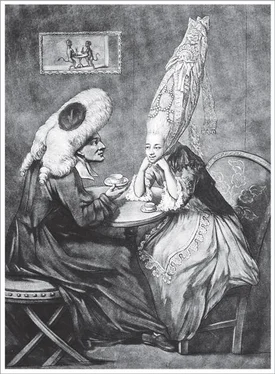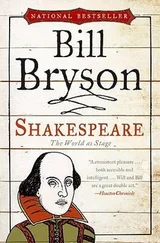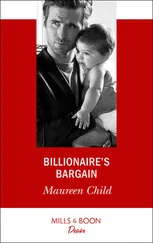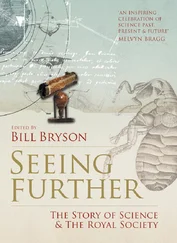Bill Bryson - At Home
Здесь есть возможность читать онлайн «Bill Bryson - At Home» весь текст электронной книги совершенно бесплатно (целиком полную версию без сокращений). В некоторых случаях можно слушать аудио, скачать через торрент в формате fb2 и присутствует краткое содержание. Жанр: Старинная литература, на английском языке. Описание произведения, (предисловие) а так же отзывы посетителей доступны на портале библиотеки ЛибКат.
- Название:At Home
- Автор:
- Жанр:
- Год:неизвестен
- ISBN:нет данных
- Рейтинг книги:4 / 5. Голосов: 1
-
Избранное:Добавить в избранное
- Отзывы:
-
Ваша оценка:
- 80
- 1
- 2
- 3
- 4
- 5
At Home: краткое содержание, описание и аннотация
Предлагаем к чтению аннотацию, описание, краткое содержание или предисловие (зависит от того, что написал сам автор книги «At Home»). Если вы не нашли необходимую информацию о книге — напишите в комментариях, мы постараемся отыскать её.
At Home — читать онлайн бесплатно полную книгу (весь текст) целиком
Ниже представлен текст книги, разбитый по страницам. Система сохранения места последней прочитанной страницы, позволяет с удобством читать онлайн бесплатно книгу «At Home», без необходимости каждый раз заново искать на чём Вы остановились. Поставьте закладку, и сможете в любой момент перейти на страницу, на которой закончили чтение.
Интервал:
Закладка:
The structure the four men came up with now was a thing of unhappy wonder. A vast, low, dark shed of a building, pregnant with gloom, with all the spirit and playfulness of an abattoir, it looked like something designed in a hurry by four people working separately. The cost could scarcely be calculated, but it was almost certainly unbuildable anyway. Construction would require thirty million bricks, and there was no guarantee that such a number could be acquired, much less laid, in time. The whole was to be capped off by Brunel’s contribution: an iron dome two hundred feet across—a striking feature, without question, but rather an odd one on a one-story building. No one had ever built such a massive thing of iron before, and Brunel couldn’t of course begin to tinker and hoist until there was a building beneath it—and all of this to be undertaken and completed in ten months, for a project intended to stand for less than half a year. Who would take it all down afterward and what would become of its mighty dome and millions of bricks were questions too uncomfortable to consider.
Into this unfolding crisis stepped the calm figure of Joseph Paxton, head gardener of Chatsworth House, principal seat of the Duke of Devonshire (but located in that peculiar English way in Derbyshire). Paxton was a wonder. Born into a poor farming family in Bedfordshire in 1803, he was sent out to work as an apprentice gardener at the age of fourteen; he so distinguished himself that within six years he was running an experimental arboretum at the new and prestigious Horticultural Society (soon to become the Royal Horticultural Society) in West London—a startlingly responsible job for someone who was really still just a boy. There one day he fell into conversation with the Duke of Devonshire, who owned neighboring Chiswick House and rather a lot of the rest of the British Isles—some two hundred thousand acres of productive countryside spread beneath seven great stately homes. The duke took an instant shine to Paxton, not so much, it appears, because Paxton showed any particular genius as because he spoke in a strong, clear voice. The duke was hard of hearing and appreciated clarity of speech. Impulsively, he invited Paxton to be head gardener at Chatsworth. Paxton accepted. He was twenty-two years old.
It was the most improbably wise move any aristocrat has ever made. Paxton leaped into the job with levels of energy and application that simply dazzled. He designed and installed the famous Emperor Fountain, which could send a jet of water 290 feet into the air—a feat of hydraulic engineering that has since been exceeded only once in Europe; built the largest rockery in the country; designed a new estate village; became the world’s leading expert on the dahlia; won prizes for producing the country’s finest melons, figs, peaches, and nectarines; and created an enormous tropical hothouse, known as the Great Stove, which covered an acre of ground and was so roomy within that Queen Victoria, on a visit in 1843, was able to tour it in a horse-drawn carriage. Through improved estate management, Paxton eliminated £1 million from the duke’s debts. With the duke’s blessing, he launched and ran two gardening magazines and a national daily newspaper, the Daily News , which was briefly edited by Charles Dickens. He wrote books on gardening, invested so wisely in the shares of railway companies that he was invited onto the boards of three of them, and at Birkenhead, near Liverpool, designed and built the world’s first municipal park. This park so captivated the American landscape architect Frederick Law Olmsted that he modeled Central Park in New York on it. In 1849, the head botanist at Kew sent Paxton a rare and ailing lily, wondering if he could save it. Paxton designed a special hothouse and—you won’t be surprised to hear—within three months had the lily flowering.
When he learned that the commissioners of the Great Exhibition were struggling to find a design for their hall, it occurred to him that something like his hothouses might work. While chairing a meeting of a committee of the Midland Railway, he doodled a rough design on a piece of blotting paper and had completed drawings ready for review in two weeks. The design actually broke all the competition rules. It was submitted after the closing date and, for all its glass and iron, it incorporated many combustible materials—acres of wooden flooring, for one thing—which were strictly forbidden. The architectural consultants pointed out, not unreasonably, that Paxton was not a trained architect and had never attempted anything on this scale before. But then, of course, no one had. For that reason, nobody could declare with complete confidence that the scheme would work. Many worried that the building would grow insupportably warm when filled with baking sunshine and jostling crowds. Others feared that the lofty glazing bars would expand in the summer’s heat and that giant panes of glass would silently fall out and crash onto the throngs below. The profoundest worry was that the whole frail-looking edifice would simply blow away in a storm.
So the risks were considerable and keenly felt, yet after only a few days of fretful hesitation the commissioners approved Paxton’s plan. Nothing—really, absolutely nothing—says more about Victorian Britain and its capacity for brilliance than that the century’s most daring and iconic building was entrusted to a gardener. Paxton’s Crystal Palace required no bricks at all—indeed, no mortar, no cement, no foundations. It was just bolted together and sat on the ground like a tent. This was not merely an ingenious solution to a monumental challenge but also a radical departure from anything that had ever been tried before.
The central virtue of Paxton’s airy palace was that it could be prefabricated from standard parts. At its heart was a single component—a cast-iron truss three feet wide and twenty-three feet, three inches long—which could be fitted together with matching trusses to make a frame on which to hang the building’s glass—nearly a million square feet of it, or a third of all the glass normally produced in Britain in a year. A special mobile platform was designed that moved along the roof supports, enabling workmen to install eighteen thousand panes of glass a week—a rate of productivity that was, and is, a wonder of efficiency. To deal with the enormous amount of guttering required—some twenty miles in all—Paxton designed a machine, manned by a small team, that could attach two thousand feet of guttering a day—a quantity that would previously have represented a day’s work for three hundred men. In every sense the project was a marvel.
Paxton was very lucky in his timing, for just at the moment of the Great Exhibition glass suddenly became available in a way it never had before. Glass had always been a tricky material. It was not particularly easy to make, and really hard to make well, which is why for so much of its history it was a luxury item. Happily, two recent technological breakthroughs had changed that. First, the French invented plate glass—so called because the molten glass was spread across tables known as plates. This allowed for the first time the creation of really large panes of glass, which made shop windows possible. Plate glass, however, had to be cooled for ten days after being rolled out, which meant that each table was unproductively occupied most of the time, and then each sheet required a lot of grinding and polishing. This naturally made it expensive. In 1838, a cheaper refinement was developed—sheet glass. This had most of the virtues of plate glass, but it cooled faster and needed less polishing, and so could be made much more cheaply. Suddenly glass of a good size could be produced economically in limitless volumes.
Allied with this was the timely abolition of two long-standing taxes: the window tax and glass tax (which, strictly speaking, was an excise duty). The window tax dated from 1696 and was sufficiently punishing that people really did avoid putting windows in buildings where they could. The bricked-up window openings that are such a feature of many period buildings in Britain today were once usually painted to look like windows. (It is sometimes rather a shame that they aren’t still.) The tax, sorely resented as “a tax on air and light,” meant that many servants and others of constrained means were condemned to live in airless rooms.
Читать дальшеИнтервал:
Закладка:
Похожие книги на «At Home»
Представляем Вашему вниманию похожие книги на «At Home» списком для выбора. Мы отобрали схожую по названию и смыслу литературу в надежде предоставить читателям больше вариантов отыскать новые, интересные, ещё непрочитанные произведения.
Обсуждение, отзывы о книге «At Home» и просто собственные мнения читателей. Оставьте ваши комментарии, напишите, что Вы думаете о произведении, его смысле или главных героях. Укажите что конкретно понравилось, а что нет, и почему Вы так считаете.












